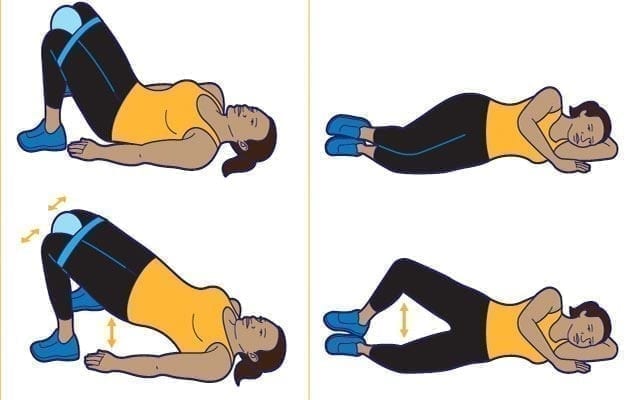
Many women share hushed stories about the sudden sneeze, the hearty laugh, or the big box jump that sent them scurrying to the restroom. But just because unexpected urination is a common occurrence doesn’t mean it’s normal, experts say.
While weakness of the pelvic-floor muscles can afflict both genders, it is more common among women, affecting one in three, says Christina Christie, PT, CCE, FAFS, FMR, president of Pelvic Solutions.
Consequences include incontinence, pelvic pain, and pelvic-organ prolapse, which causes organs like the bladder, vagina, and rectum—normally supported by the hammock-like pelvic-floor muscles — to painfully droop out of place. Despite the prevalence of such problems, “most women do not seek treatment either because they are embarrassed or because they assume it’s normal—perhaps because everyone else they know has the same issue,” says Ann Wendel, PT, ATC, CMTPT, founder of Prana Physical Therapy.
Weakness or dysfunction in the pelvic-floor muscles (which, when contracted, allow you to stop peeing midstream) is often connected to muscular deficiencies in the abdominals, hips, back, and diaphragm, which together make up the core.
Although Kegel exercises—flexing and relaxing the muscles that you use to stop urination — are a traditionally recommended therapy, Christie and Wendel both suggest incorporating other exercises to strengthen the hips and abdominal muscles as well.
Bridge with Hip Rotations

- Lie on your back and position a small, inflatable exercise ball between your knees, and loop a small resistance band around the outside of your knees. Place your feet on the floor, with knees bent, and point your feet straight ahead.
- Lift your hips into a bridge position, then alternate gently pressing your knees in against the ball and out against the resistance band.
- Repeat the movement with your toes pointed inward, then outward.
- Repeat 10 times per variation.
Side Clamshell

- Lie on your side with your hips stacked and knees bent. Stabilize yourself with a hand on the floor in front of you.
- Lift and contract your pelvic-floor muscles, and begin to lightly exhale. Keeping your feet together, open your legs like a clamshell as far as you comfortably can. If it’s difficult to do this without your hips rolling back, position yourself against a wall.
- Pause for one or two seconds with your knees open, then return to the starting position and release the pelvic-floor contraction.
- Repeat 10 times per side.
Squat with Pelvic-Floor Integration
- Stand with feet wider than hip-width apart, with toes slightly angled out, arms at your sides, ribs over the pelvis, and the pelvic floor relaxed.
- Inhale through your nose as you squat down as far as you comfortably can, allowing your pelvic floor to stay relaxed and keeping your belly soft.
- Exhale through your mouth as you return to standing, contracting and “lifting” the pelvic floor. Think about exhaling as if you are fogging up a mirror with your breath.
- Repeat 10 times.
Kegel Exercises
- Identify your pelvic-floor muscles by trying to stop your urination midstream.
- Once you’ve identified your pelvic-floor muscles, practice engaging them. With an empty bladder, tighten the muscles, hold the contraction for five seconds, then relax for five seconds. Repeat four times in a row, three times per day.
- Focus on breathing comfortably throughout the contraction, and take care not to flex the muscles in your abs, legs, or butt.

